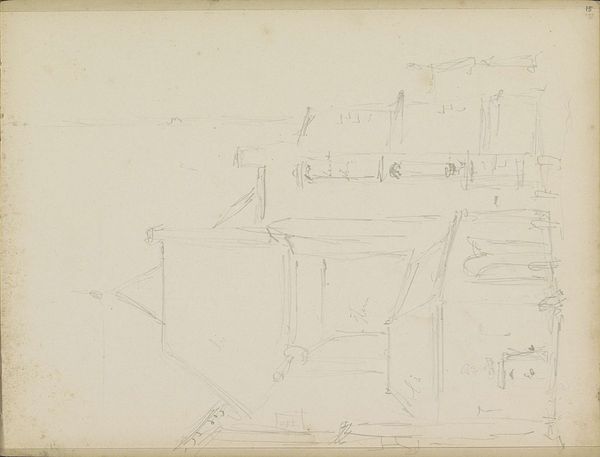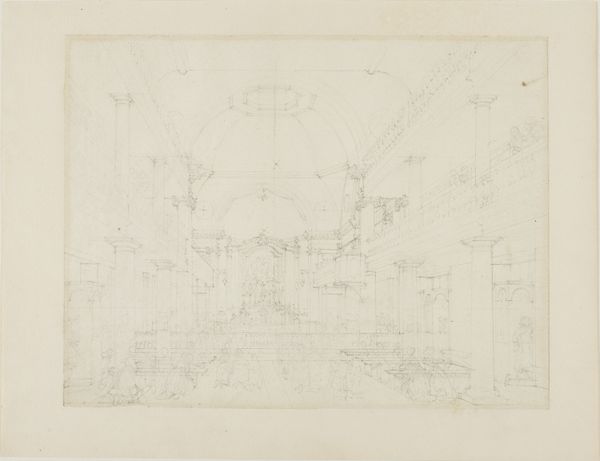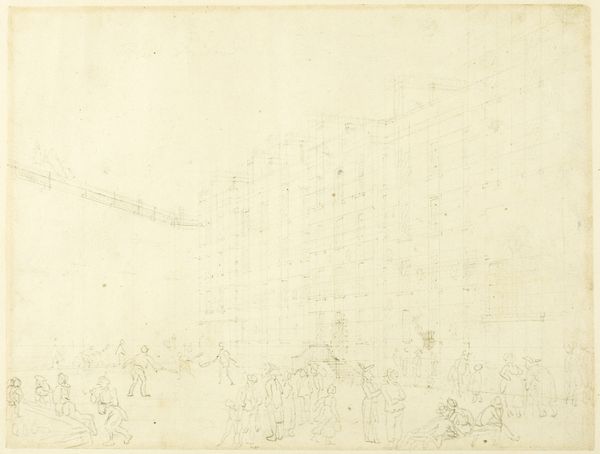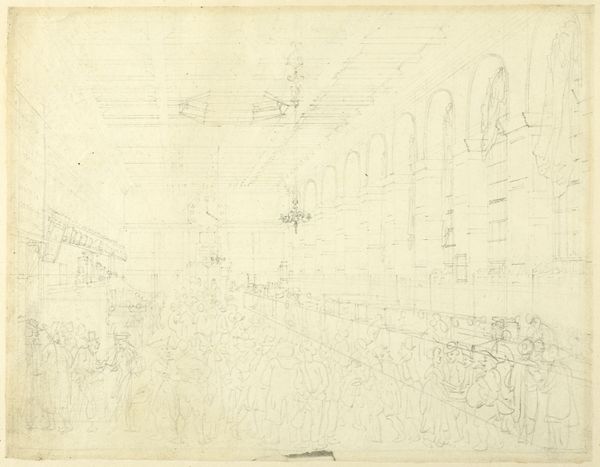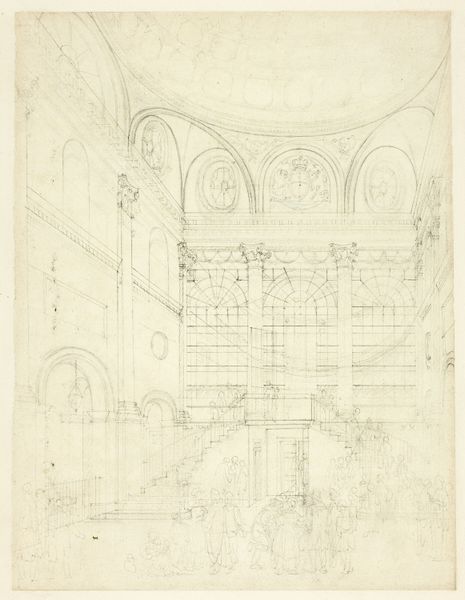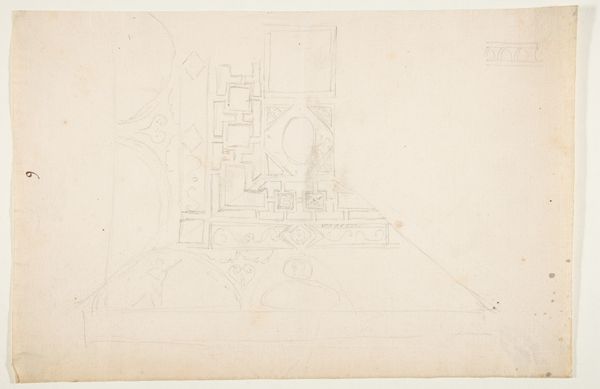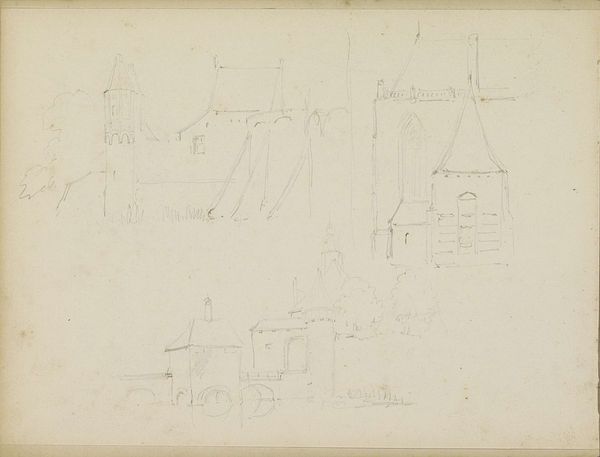
Study for Water Engine, Cold-Bath, Field's Prison, from Microcosm of London c. 1808
0:00
0:00
drawing, print, paper, graphite
#
drawing
# print
#
landscape
#
paper
#
graphite
Dimensions: 257 × 186 mm
Copyright: Public Domain
Curator: Sobering. The graphite on paper makes it seem more like an architectural plan than a work of art, but there's something bleakly compelling about it. Editor: Indeed. This is Augustus Charles Pugin's "Study for Water Engine, Cold-Bath, Field's Prison, from Microcosm of London," dating from around 1808. Pugin was a French-born British artist, architectural draftsman, and writer. His work often engaged with the realities of early 19th-century London. Curator: Well, thinking of the industrial context and Pugin’s architectural background, I find myself focused on the literal mechanics depicted: the engine, the presumed labor involved, and the function of the space. It’s the confluence of structure and servitude, of technological aspiration coupled with human toil. Editor: Precisely, and consider the specific context of Field's Prison. These water engines and cold baths weren't just about function. They were part of a punitive system designed to discipline and "rehabilitate" inmates through labor and forced hygiene practices. Pugin's sketch offers a glimpse into the intersection of power, class, and incarceration. It's worth noting how prison reform was gaining attention in Britain at this time as well. Curator: So, it becomes a study of exploitation mediated by emerging technology. I’m drawn to how Pugin has reduced human figures to mere sketches; they’re dwarfed by the engine, highlighting its power within that structure. Editor: Absolutely. By focusing on the architecture and the cold, mechanistic process, he draws attention to the dehumanizing aspects of the penal system. One could see the rudimentary linework, a mere blueprint, speaking to how prisoners become ciphers in a much larger and harsher mechanism. It's as if their existence is reduced to these sketched lines as well. Curator: Fascinating. Seeing the physical construction, then connecting it to those incarcerated within. Pugin captures something profound with simple tools. Editor: Right. A meditation on the grim intersection of modernity, labor, and punishment rendered simply in graphite. Curator: I think it really reveals the core function of the penal system, where human lives and labors become mere materials in a calculated structure. Editor: Agreed. Its power lies in exposing this historical nexus of social control through technological means.
Comments
No comments
Be the first to comment and join the conversation on the ultimate creative platform.
